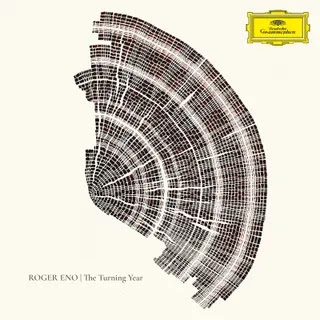A frequent collaborator of ambient musicians like Laraaji and his brother Brian Eno, the British composer presents a collection of wistful solo piano pieces shaded by strings.
Roger Eno creates pastoral landscapes in sound, letting each simple melody unfold with patience. In a career stretching back decades, the British composer has collaborated with a number of prominent ambient artists, including his older brother Brian Eno and new-age multi-instrumentalist Laraaji. On The Turning Year, he steps out solo, showcasing a keen sense for delicate, unornamented melodies that serve as vehicles for reflection.
The Turning Year features compositions both new and old, each illuminating Eno’s knack for creating sweeping palettes. Every piece follows a similar pattern: Lush strings played by Score Berlin swirl around simple, melancholic piano melodies reminiscent of one of Eno’s favorite composers, Erik Satie. It’s cinematic music, driven by sprawling harmonies and fluid motion. Rather than dreaming of the future, these nostalgic pieces feel as if they’re looking back at the past, taking in a bird’s eye view of the change that occurs throughout life.
Much of The Turning Year builds from short, looping piano phrases that become enveloped by warm strings. Opener “A Place We Once Walked” is emblematic of this style: It begins with a pensive melody that slowly tumbles and repeats, each time with a little more emphasis than the last. Gradually, the piano melds with vivid strings that add richness and glow to its stark, introverted melodies. Eno utilizes a similar tactic throughout, but it works best on the radiant "The Turning Year," where the bright keyboard melody and deep, full-bodied strings combine in a particularly bold, resonant way.
But the instruments come unglued at other points, leading to a sense of restraint, even hesitancy. In these moments of disconnection, Eno’s overarching structure falters. “Something Made Out of Nothing” grows from a slow piano melody full of pauses and echoes, while strings appear like a wispy cloud around it, soft but far too thin. It feels as if none of the performers are sure what comes next. This uneasiness comes through elsewhere, too, like “On the Horizon,” which introduces a clarinet in stilted conversation with the piano. In its uncertainty, the piece lacks the slowed-down, reflective feeling that makes Eno’s music compelling.
In the moments where each element clicks together, though, Eno succeeds at grasping the way that music can mimic memory’s fluidity. As though attempting to color in recollections that have grown fuzzy, his nostalgic compositions and suspended motion often emulate the feeling of trying to recall memories that have lost their shape. His drifting waves of sound gloss over details, blurring the mechanics of his melodies and leaving us only with their wistful spirit.



0 comments:
Post a Comment